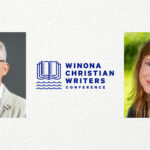Do you want to know how to become a licensed mental health counselor? In the field of counseling, it’s essential to develop skills and knowledge to confidently treat your patients.
Mental health counseling theories provide a framework for understanding clients and helping them with their problems. Psychologists, counselors and therapists use these theories in psychotherapy to help guide clients once a diagnosis is made. That’s why Grace College’s online Master of Clinical Mental Health Counseling degree covers the following theories.
1. Behaviorism
Behavioral theorists hold that actions are determined largely by life experiences. In other words, behavior is learned. As a result, explanations and treatments rely on principles of learning, or processes by which behaviors change in response to the environment.
A primary concept in behaviorism is conditioning, which refers to simple forms of learning that involve stimuli and rewards. Several forms of conditioning may produce normal or abnormal behavior.
- In operant conditioning, humans and animals learn to behave in certain ways as a result of receiving rewards whenever they do so.
- In classical conditioning, learning occurs by temporal association. This means that when two events repeatedly occur close together, they become fused in a person’s mind, and a person responds in the same way to both events. Ivan Pavlov discovered this form of conditioning in his famous experiments with dogs. The dogs associated the sound of a dinner bell with food and began drooling at the sound.
- In modeling, individuals learn responses simply by observing other individuals and repeating their behaviors.
Behavioral therapy seeks to identify behaviors that are causing a person’s problems and then tries to replace behaviors with principles of operant conditioning, classical conditioning and modeling. For instance, one classical conditioning treatment is systematic desensitization, which changes abnormal reactions to particular stimuli. A therapist will apply this treatment method to specific phobia to help clients learn how to react calmly to feared objects or situations. The client will imagine or confront feared objects or situations, starting with the least feared and ending with the most feared.
2. Psychodynamic Theory
Like behavioral theorists, psychodynamic theorists believe that actions are determined largely by life experiences. In fact, psychodynamic theories rest on the assumption that all behavior is determined by past experiences; no symptom or behavior is “accidental,” according to Ronald Comer in Abnormal Psychology.
The psychodynamic model was first formulated by Viennese neurologist Sigmund Freud. He believed that three central forces shape personality — the id contains instinctual needs, the ego employs reason and the superego represents a person’s values and ideals. Also, Freud proposed stages of developments that require adjustments in id, ego and superego; if the proper adjustment doesn’t occur, the person may be headed for abnormal functioning.
Other theorists, notably Carl Jung and Alfred Adler, diverged from Freud and developed new theories. All of these are considered to be psychodynamic theories, as they share Freud’s belief that human functioning is shaped by dynamic (interacting) psychological forces.
Psychodynamic therapies involve several techniques such as the following:
- Free association involves the client describing any thought, feeling or image that comes to mind, even if it seems unimportant or irrelevant. This helps uncover unconscious events and underlying dynamics.
- Therapist interpretation involves the therapist looking for clues and sharing interpretations when clients are ready to hear them. Three types of interpretations are particularly important: resistance, which involves the unconscious refusal to fully participate in therapy; transference, where clients act and feel toward the therapist the way they do or did to someone important in their life; and the interpretation of dreams.
- Catharsis is the reliving of past repressed feelings, which therapists believe clients must experience to settle internal conflicts and overcome their problems.
- Working through is the process of a therapist and client examining the same issues over and over with greater clarity. This occurs over many sessions and can take years.
3. Cognitive Theory
The cognitive model asserts that cognitive processes are at the center of behaviors, thoughts and emotions. Proposed by Albert Ellis and Aaron Beck, cognitive theory emphasizes what people think instead of what they do.
The central place of cognition in this theory helps explain and resolve abnormal behavior. Clinicians need to understand what assumptions and attitudes clients have, which can influence their perceptions and thoughts and ultimately impact the conclusions they have. Several types of cognitive problems — like assumptions, attitudes that are disturbing and inaccurate, and types of illogical thinking such as overgeneralizations — can lead to abnormal functioning.
Cognitive therapy helps people overcome problems by developing new, more functional ways of thinking. By changing their thoughts, people can change how they feel and act. Therapists help clients recognize negative thoughts, errors in logic and biased interpretations that dominate their thinking and can, for instance, lead them to feeling depressed. This type of therapy challenges dysfunctional thoughts and encourages people to apply new types of thinking to their lives.
4. Humanistic Theories
Humanistic therapists emphasize helping clients achieve their highest potential. They are often grouped together with existential theorists because of their common focus on broader dimensions of human existence. There are three major types of therapies and theories under the humanistic approach.
- Carl Rogers developed a humanistic approach called client-centered therapy, which creates a supportive climate for clients to openly and honestly look at themselves. Therapists need to display important qualities such as unconditional positive regard (full acceptance), accurate empathy (skillful listening and reinstatements) and genuineness (sincere communication).
- Gestalt therapy is another humanistic approach. Developed by Frederick Perls, gestalt therapy focuses on the client’s experience in the present moment. A common technique in gestalt therapy is role playing, in which the therapist instructs clients to act out various roles to “own” or accept feelings that previously made them uncomfortable.
- Existential therapy encourages clients to accept responsibility for their lives and their problems. This is done by helping clients understand their freedom so that they can choose a different course and live with greater meaning. Existential therapy is rooted in the existential philosophy (existentialism) of figures like Søren Kierkegaard and Friedrich Nietzsche.
How to become a licensed mental health counselor
Grace College’s online M.A. in Clinical Mental Health Counseling equips students with this information and so much more! The MACMHC degree is a faith-based program that analyzes major mental health theories and strategies through a biblical lens. Each of our students takes “The Theological Foundations in Counseling,” a course which teaches students how to apply Scriptural truth and principles in practice.
For more information on how to become a licensed mental health counselor, click here, or contact our friendly admissions counselors at onlineadmissions@grace.edu.




